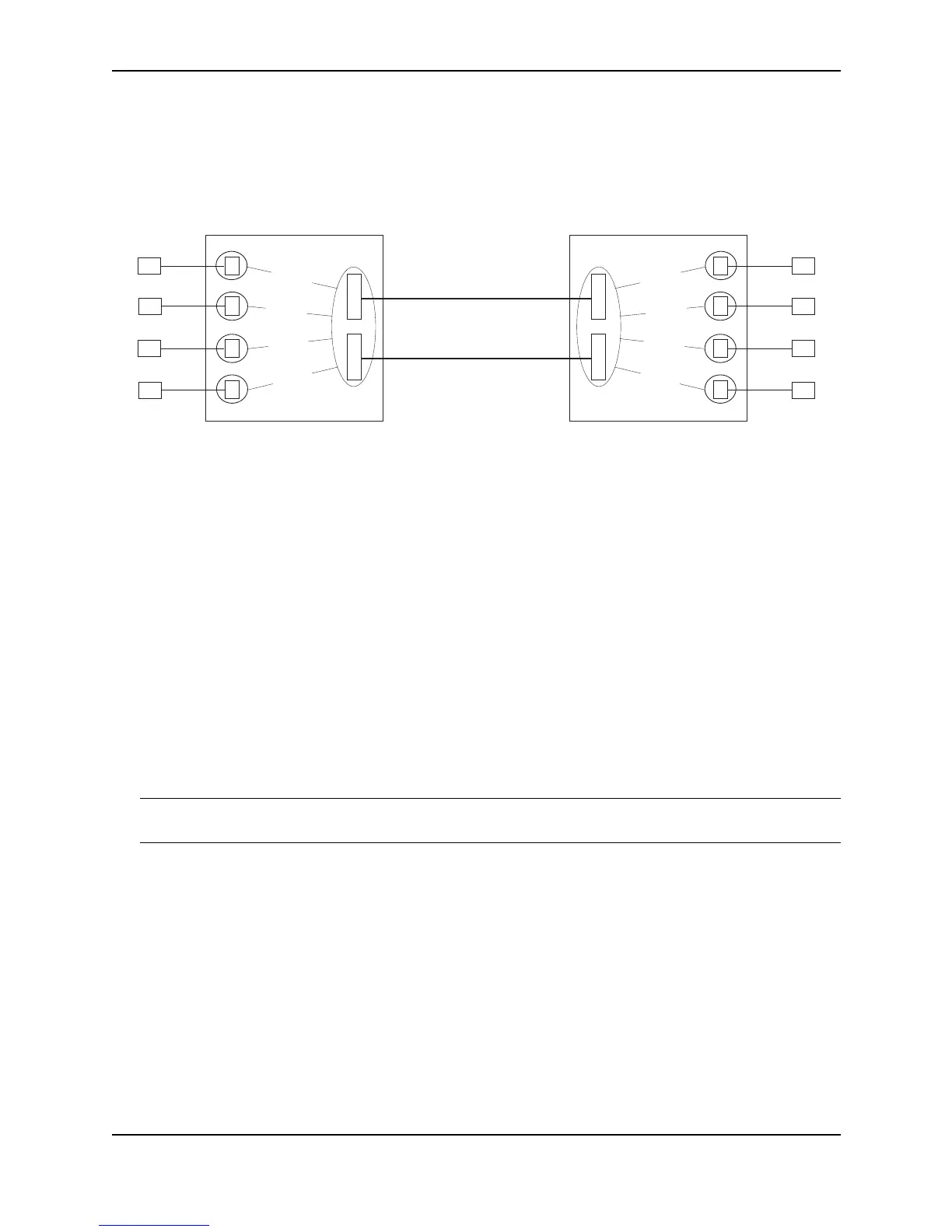Using Packet Over SONET (POS) Modules
December 2000 6 - 15
Figure 6.5 POS Layer 2 port redundancy using STP – port path costs configured for load balancing
Notice that each POS port on switch B blocks two of the VLANs but forwards the other two VLANs. STP prefers
the path that has the lower value as the path to the root bridge. In this example, STP in VLANs 10 and 20 on
switch B prefers the first POS port as the path to the root bridge. STP in VLANs 30 and 40 prefer the second POS
as the path to the root bridge.
Using a Trunk Group for Redundancy and Load Balancing
Figure 6.6 shows an example of POS ports configured for redundancy by adding them to a trunk group. In
addition to redundancy, a trunk group provides load sharing. The ports can each actively send traffic, thus
providing additional bandwidth. When you use STP to provide redundancy, all ports in a trunk group have the
same STP status. The status is based on the trunk group’s primary (lead) port.
NOTE: You can use a trunk group for Layer 2 POS redundancy and load balancing only on a BigIron or NetIron
running Layer 2 Switch code, not Layer 3 Switch code.
P
O
S
S2
P
O
S
E
E
E
E
S3
S4
VLAN 40
S1
VLAN 10
VLAN 20
VLAN 30
P
O
S
C2
P
O
S
E
E
E
C3
C4
VLAN 40
C1
VLAN 10
VLAN 20
VLAN 30
Foundry switch B
E
192.168.2.20192.168.2.10
192.168.3.20
192.168.3.10
192.168.4.20
192.168.4.10
192.168.1.20
192.168.1.10
Ethernet over POS
Each client and its server on the other
Foundry device are in the same sub-net.
Traffic between each client and its server
is bridged over a PPP link on the SONET
link on the Layer 2 POS ports.
To provide load balancing in
addition to redundancy, configure
the STP path cost of the POS ports
to different values on different VLANs.
Spanning Tree is enabled on the client
and server VLANs. For each VLAN, one
POS link is active and the other is a standby.
Each POS port is simultaneously blocking
for some VLANs while forwarding for others.
Thus, the ports load share by each forwarding
traffic for some of the VLANs.
This example assumes that Foundry switch A
is the root bridge for all the VLANs.
Foundry switch A
(root STP bridge)
FWD VLAN 10, path cost 100 BLK
VLAN 20, path cost 100
VLAN 30, path cost 80
VLAN 40, path cost 80
FWD BLK
FWD FWD
FWD FWD
FWD VLAN 10, path cost 80 FWD
VLAN 20, path cost 80
VLAN 30, path cost 100
VLAN 40, path cost 100
FWD FWD
FWD BLK
FWD BLK
